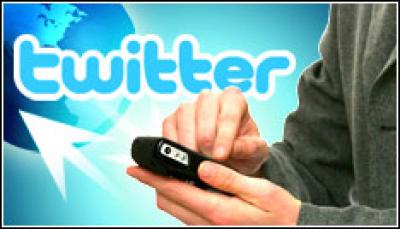Customers Increasingly Turn To Twitter To Vent Anger

Disgruntled customers are turning to Twitter to voice complaints that can damage brand reputations
Companies should be wary of disgruntled customers who are increasingly turning to Twitter to complain, which can impact an organisation’s brand equity.
So says TOA Technologies, a provider of on-demand mobile workforce management software solutions, after it released the results of its study on customer behaviour and the use of Twitter in customer service.
The survey found that more than 1 million people per week view Tweets related to customer service experiences with a variety of service providers and that more than 80 percent of those Tweets reflect a critical or negative customer experience.
Twitter Impact
According to the study’s findings, customers who have a negative customer service experience, and who broadcast that message via Twitter to their followers, have a broader impact on brand equity than ever before. As Twitter continues to grow dramatically, the reach and influence of these Tweets will continue to expand at an exponential pace due to the network affect, the survey indicated.
TOA research concluded that cable companies, and other service providers who have regular interactions with customers, need to refine their customer service strategies to reflect the growing power of consumers’ voices, by not only incorporating social media channels, but also providing new solutions to alleviate frustrated customers’ complaints.
 “It may not be a big surprise that people Tweet when they are unhappy about customer service – but what is astonishing is the expansive network effect of these Tweets,” said Yuval Brisker, CEO of TOA Technologies. “Based on our study’s findings that most customers’ Tweets about service providers reflect a negative experience, a key goal of every service-based company should be to keep their name off of Twitter.”
“It may not be a big surprise that people Tweet when they are unhappy about customer service – but what is astonishing is the expansive network effect of these Tweets,” said Yuval Brisker, CEO of TOA Technologies. “Based on our study’s findings that most customers’ Tweets about service providers reflect a negative experience, a key goal of every service-based company should be to keep their name off of Twitter.”
Brisker said as cable companies begin to focus more on customer service differentiation, they need to not only refine their social media strategy, but also focus on innovative preventative solutions for the problems that cause these Tweets. “Software solutions that aim to predictively engage customers before problems arise, and provide real-time solutions in advance, are obtaining the best results,” he noted.
Negative Experiences
The survey also found that while the average appointment window for the cable carriers analysed was four hours, some customers related waiting times on service windows of more than 20 hours. Tweets ranged from sarcastic, “If I was a cable Guy I’d call into work like one too, ‘I’m be late today…I’ll be in sometime between 8-1,'” to resigned, “Now begins the vigil of waiting for the cable guy in an unreasonably wide window of time. Sigh,” to frustrated, “Day 2 in the apartment: waiting for the cable guy. Let’s see if he really comes.”
The statistical sampling of more than 2,000 Tweets was collected during the period of 25 February to 2 May, 2011, and focused on terms that included “the Cable Guy” and “installation appointments,” among other terms.
TOA’s study found that during the selected time period, 82 percent of the surveyed Tweets contained negative (or somewhat negative) sentiments about customers’ cable appointment experience – with these Tweets reaching more than 780,000 additional followers at the first level (TOA did not calculate the effect of re-Tweets).
“Twitter users post an average of 50 million Tweets per day, so one unsatisfied customer has the potential to negatively impact the bottom line of any service provider by Tweeting about one bad experience,” Brisker said.